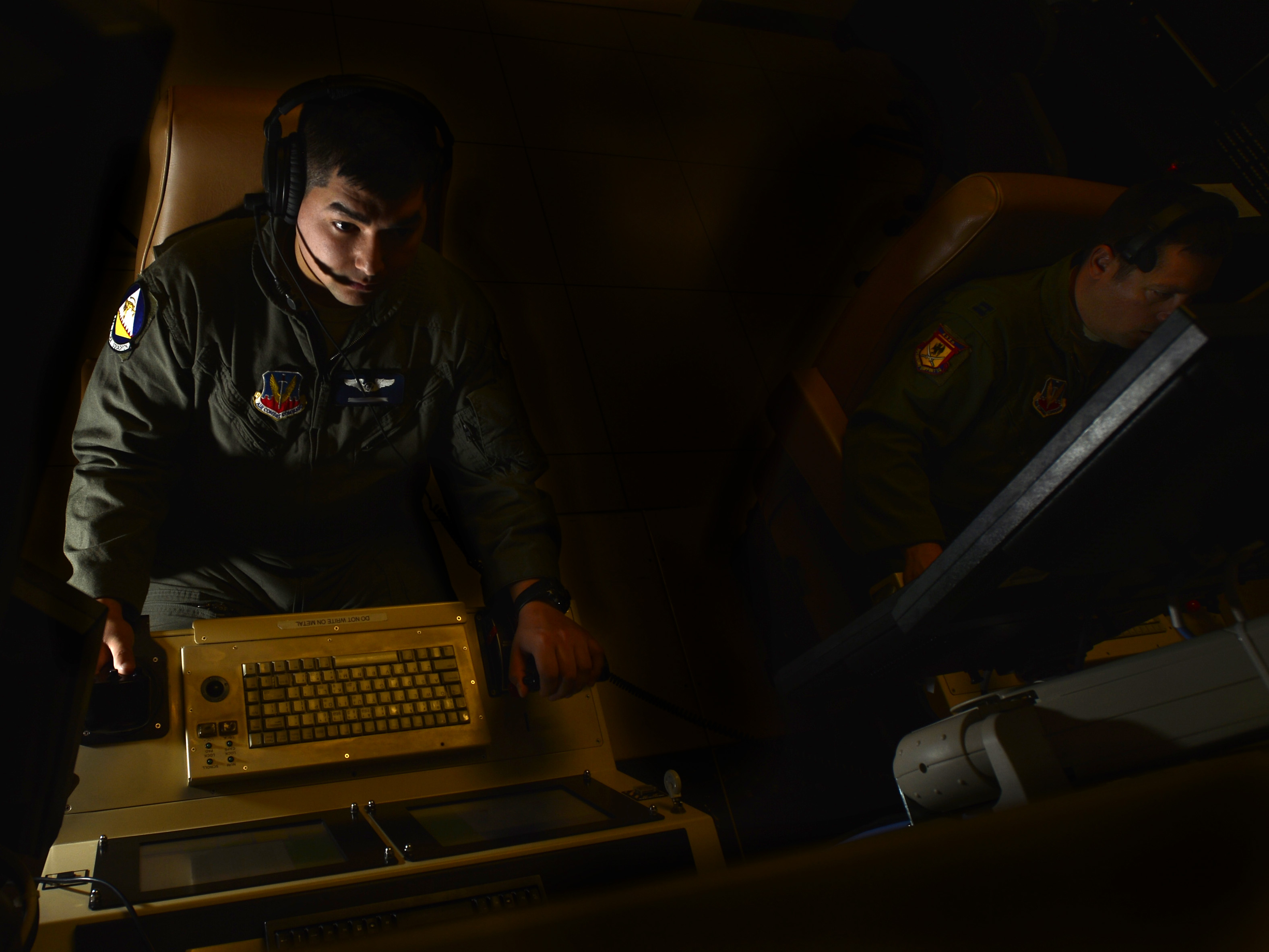
SrA.Than, a 42nd Attack Squadron MQ-9 sensor operator, flies a simulated training mission Nov. 28, 2016, at Creech AFB, Nev. Air Force photo by SrA. Christian Clausen.
The Air Force needs to change how its remotely piloted aircraft community operates if it wants to meaningfully address its manning shortfall, because it simply takes too many people to operate an RPA, the head of Air Education and Training Command said Thursday.
The shortfall in the RPA community stems from the fact that it takes 10 people to fly one unmanned aircraft, while a manned squadron operates on a 1.5 to 1 ratio, AETC Commander Lt. Gen. Steven Kwast said at AWS18.
“We have more people doing this RPA business … than we do any of the other business lines of aviation,” Kwast said. “It doesn’t mean we have to live with that. We have to change that, because it’s too expensive in manpower.”
The Air Force’s RPA infrastructure was a “solution in the throes of Afghanistan and Iraq,” one that “fit the need of the day.” Now, efficiency is as important as effectiveness and AETC is trying to find ways to reduce how manpower intensive it is to conduct ISR operations at a time when the need for more ISR continues to skyrocket.
The Air Force could address this by effectively using emerging technology and techniques, or finding other types of talent. There has already been some progress in this area, Kwast said. When the Air Force first flew remotely piloted aircraft operationally, it required 13 personnel to operate one MQ-1 Predator, he said.
Kwast said he is working with the whole of the Air Force to “build a strategy” and “change the game” to find ways to produce more ISR with fewer people. This process is still early on, with the biggest progress possibly happening years from now, he said.